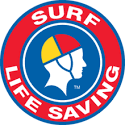Our mission is simple; saving lives, creating great Australians and building better communities.

Our mission is simple; saving lives, creating great Australians and building better communities.
The origins of Surf Life Saving New South Wales, and indeed Australia, can be traced back to the actions of Mr William Gocher at Manly Beach in September 1902, defying the law of the time by bathing during the prohibited hours.
As surf bathing grew in popularity, its dangers just as rapidly became apparent. Small groups of experienced and regular surfers began to form themselves into lifesaving bodies to assist those who required to be rescued from an unfamiliar environment.
As these clubs grew in size and numbers, the need for a united front to raise funds and seek assistance from local and state government resulted in the New South Wales Surf Bathing Association being formed on 18 October 1907.
Although lifesaving remains the top priority for the membership Surf Life Saving has evolved into a movement capable of offering diverse opportunities to all.
For example lifesavers can begin their journey in Nippers, grow up to patrol beaches, volunteer in education to help train other lifesavers, serve their club in a variety of roles, and compete in surf sport.
To keep our beaches safe, surf lifesavers patrol beaches from September to April. Each season surf lifesavers spend in excess of 650,000 voluntary hours patrolling most of the accessible beaches along the New South Wales coastline giving back to the community in a variety of ways.
It is thanks to the dedication and professionalism of our fine volunteers that New South Wales beaches are amongst the safest in the world.
As we move deeper into the 21st century, Surf Life Saving NSW will continue to live up to its ethos of saving lives, building better communities, and creating great Australians.
Throughout its history, Surf Life Saving has played an integral part in the social, cultural, and lifestyle fabric of Australian society. The red and yellow flags are an important part of each summer universally recognised and respected as the sign of the lifesaver.
Our mission is simple; saving lives, creating great Australians and building better communities.
With the world changing rapidly around us, there has never been a greater need for Surf Life Saving NSW to be more flexible and more innovative to meet the evolving needs and expectations of our members and our communities.
To meet this challenge we need to reimagine surf lifesaving to ensure our relevance and value to the NSW community.
Now boasting over 75,000 members in NSW alone it can rightfully claim to be one of the largest volunteer organisations of its type in the country.
The state’s lifesavers are currently involved at 129 clubs, patrolling over 1500 kilometres of coastline from Lighthouse Beach in the north to Pambula Beach in the south, and building on a legacy that can be traced back to the early 20th century.
The origins of Surf Life Saving New South Wales, and indeed Australia, can be traced back to the actions of Mr William Gocher at Manly Beach in September 1902, defying the law of the time by bathing during the prohibited hours.
As surf bathing grew in popularity, its dangers just as rapidly became apparent. Small groups of experienced and regular surfers began to form themselves into lifesaving bodies to assist those who required to be rescued from an unfamiliar environment.
As these clubs grew in size and numbers, the need for a united front to raise funds and seek assistance from local and state government resulted in the New South Wales Surf Bathing Association being formed on 18 October 1907.
Although lifesaving remains the top priority for the membership Surf Life Saving has evolved into a movement capable of offering diverse opportunities to all.
For example lifesavers can begin their journey in Nippers, grow up to patrol beaches, volunteer in education to help train other lifesavers, serve their club in a variety of roles, and compete in surf sport.
© 2025 coursetakers.com All Rights Reserved. Terms and Conditions of use | Privacy Policy